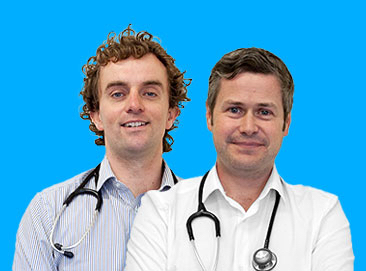If you’re a salaried doctor employed by the NHS, then your earnings will be taxed at source, through a system known as Pay As You Earn (PAYE).
Mostly everyone in the UK will be allowed a tax-free personal allowance, which as of the 2024/25 tax year stands at £12,570. There is an exception to the Personal allowance, however, which is when your adjusted net income is over £100,000. At this stage, every £2 you earn above this decreases your personal allowance by £1. This is a very important income tax rule to be aware of for doctors. At this stage, you’ll also need to do a Self-Assessment tax return.
Income tax rates and bands – England, Wales, Northern Ireland
Band | Taxable income | Tax rate |
| Personal allowance | Up to £12,570 | 0% |
| Basic rate | £12,571 to £50,270 | 20% |
| Higher rate | £50,271 to £125,140 | 40% |
| Additional rate | Over £125,140 | 45% |
Join 30,000 doctors and receive free, exclusive, financial CPD for doctors in your inbox.
Medics’ Money is run by doctors and finance experts, for doctors. Our free financial CPD gives you all the knowledge you need to take control of your finances.

Income tax rates and bands – Scotland
Band | Taxable income | Tax rate |
| Personal allowance | Up to £12,570 | 0% |
| Starter rate | £12,571 to £14,876 | 19% |
| Basic rate | £14,877 to £26,561 | 20% |
| Intermediate rate | £26,562 to £43,662 | 21% |
| Higher rate | £43,663 to £75,000 | 42% |
| Advanced rate | £75,001 to £125,140 | 45% |
| Top rate | Over £125,140 | 48% |
Note that you do not get a Personal Allowance on taxable income over £125,140.
National Insurance
National Insurance is a mandatory tax paid by both employers and employees on salaries and on profits for Self-Employed individuals. For employees it will be deducted at source, much in the same way as income tax is taken off and detailed on your payslip. It is paid to ensure you qualify for some benefits and, more importantly, a pension from the state. Self-employed individuals will pay their National Insurance via Self-Assessment.
There are six types of National Insurance but I’ll only mention three here (note that all figures given below are for the tax year ended 5 April 2025 i.e. 2024/25.)
For employees the key type of National Insurance is called Class 1 Primary National Insurance which is paid on earnings from employment. Class 1 Secondary National Insurance is paid by employers on these earnings (it is these employer contributions that account for the majority of the revenue raised from NIC.) Using yearly numbers, the first £12,570 of earnings in the tax year is charged at 0%, between £12,570 and £50,270 is charged at 8% and above £50,270 at 2%.
For self-employed individuals (which may be relevant for those locuming for example) the following are relevant:
- Class 2 NIC has been changed significantly and abolished for most of the self-employed. Class 2 NIC was set as a weekly amount of £3.45 that the self-employed usually had to pay as a way to get an NIC contribution towards their state pension even if their profits were too low to pay Class 4 NIC on their profits or if they made a loss. Effectively, from 6 April 2024, a person with profits in excess of £12,570 no longer has to pay class 2 NIC. Where profits are at least £6,725, the person continues to receive access to contributory benefits (eg, the state pension). Where profits are under £6,275 or a loss is made, the person can make voluntary class 2 NIC at the rate of £3.45 per week in order to get access to contributory benefits.
- Class 4 National Insurance is paid on profits from trade. On profits between £12,570 and £50,270 per year, the main rate of Class 4 NIC is 6% so slightly lower than for employees (8%).
What medical school didn’t teach us about money
“What medical school didn’t teach us about money” will give doctors a step by step plan to transforming your financial future. Enter your details to download your copy now









